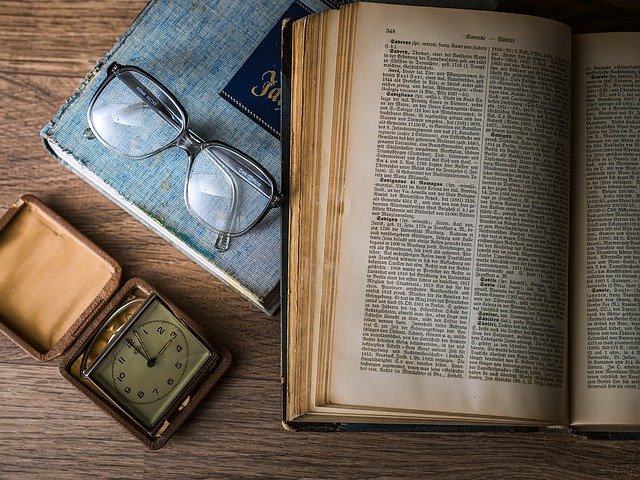
As writers, we know that language is powerful. Words and phrases combine to paint pictures, tell stories, and teach lessons. The way we use words isn’t just nouns, verbs, and adjectives. There are myriad rhetorical devices at our disposal. But are you using only a few tools in your toolbox?
Rhetorical devices, also called literary devices when we’re discussing fiction, are tricky ways to use language to achieve a certain goal. This goal might be to emphasize, to set the tone or mood, to create an image in the readers' minds, or many other reasons.
Sure, you’re probably familiar with similes, metaphors, assonance, alliteration, and personification. But what about the more obscure literary devices? I’ve selected seven of my favorite underappreciated literary devices.
1. Anaphora
Anaphora is my absolute favorite rhetorical device, to the point that I overuse it in my first drafts. This device is just as effective in a blog post as it is in a literary masterpiece. Anaphora is a type of repetition. It involves repeating words or phrases at the beginning of clauses or sentences.
The most famous example of anaphora is Martin Luther King, Jr.’s “I have a dream speech.” Throughout his speech, he repeats the phrase “I have a dream” to emphasize the changes he desires to see. It’s poignant and memorable.
While it’s a great tool for speeches, it’s also powerful in fiction. For example, Kathryn Stockett uses anaphora in The Help: “You is kind. You is smart. You is important.”
You can read more about anaphora here.

2. & 3. Assonance and Consonance
I’ve lumped assonance and consonance together because they are very similar and serve essentially the same purposes. You probably know about alliteration, which is repeated initial consonant sounds.
Assonance is repeated vowel sounds in two more words that are in close proximity to each other. However, it’s not rhyming—the end sounds of the words do not have to be the same. For example, Edgar Allan Poe used assonance in the opening line of his poem, The Raven:
“Once upon a midnight dreary, while I pondered, weak and weary.”
Dreary, weak, and weary all have the long E sound. Upon and pondered both use the short O sound. Assonance is used to create a lyrical rhythm, which can be used to set the tone, create imagery, or moderate the pacing of a scene.
Consonance is similar. It’s the use of repeated consonant sounds in the middle or ends of words that are in proximity. In addition to setting the tone and painting a picture, consonance is effective for both emphasis and onomatopoeia. One of the best examples of consonance is from Dylan Thomas poem, Do Not Go Gentle.
“Do not go gentle into that good night.”
The repeated T sound clearly drives Thomas’ message home.
4. Epistrophe
Epistrophe is used much like anaphora, for emphasis and poignancy. However, epistrophe is the repeated use of words or phrases at the end of sentences or clauses instead of the beginning.
Epistrophe can use just one repeated word, a few words, or entire clauses. One of the most powerful examples comes from the 2003 film version of The Return of the King. Aragorn’s speech at the gates of Mordor repeats an entire sentence.
“A day may come when the courage of men fails, when we forsake our friends and break all bonds of fellowship, but it is not this day. An hour of woes and shattered shields, when the age of men comes crashing down! But it is not this day! This day we fight!”
5. Litotes
It might not seem intuitive to think of understatements being used for emphasis, but I bet you have done it in your real life. Sometimes, we use understatements sarcastically. Litotes is a similar rhetorical device, and it is used for emphasis.
To use litotes, you negate a positive statement to make the opposite point. Usually, this is done by using “not” or “no” in the statement. Here are a few examples:
- She is not overly tall.
- He’s no Casanova.
- It was no ordinary Wednesday.
- Do it yourself. I’m not your mother.
Litotes can change the tone of a scene or piece of dialogue to sardonic or satirical, as in the first two examples. But the second two are simply to emphasize a point: it was an extraordinary or unusual Wednesday, and the speaker is annoyed and doesn’t want to take care of the person she’s speaking to.

6. Tautology
Tautology is yet another form of repetition, and its exact definition is debated by scholars. However, it is best described as a “repetition of meaning.” Sometimes this might be repeating a word for emphasis, as in the next line of Dylan Thomas’ poem:
“Rage, rage against the dying of the light.”
However, some would classify this as simple repetition, whereas tautology can be more precisely defined as different words to repeat the same meaning. For example, you might tell someone to “shout out loud,” but by definition, shout means to say something out loud, so out loud is tautological. Another example is the phrase “close proximity.” Both words mean “near.”
Tautology, like most literary devices, can be easily abused. In general, too many tautologies are considered non-standard English and can bog down your writing. However, an intentionally placed tautology can provide added emphasis to an important line in your work.
To make sure you’re not overusing tautology, run your writing through ProWritingAid’s Clichés and Redundancies Check. This will highlight all of the places where you’ve used two words that mean the same thing in sequence. You can then evaluate your word choices to check if the tautology is actually making your writing stronger, or if you need to use one more powerful word in place of two.
7. Zeugma
I love a well-placed zeugma. Zeugmas don’t appear often, but when they do, they stand out.
A zeugma is a phrase where a single verb is linked to more than one noun to combine phrases that are logically or grammatically different. They are clever literary devices that are almost pun-like.
There are many types of zeugmas, but the most interesting uses a single verb to show a contrast between literal and figurative nouns. For example, if you fall down the stairs in public, you could say, “I lost my footing and my dignity.” Losing your footing is literal, but losing your dignity is more abstract.
Mark Twain once wrote, “[they] covered themselves with dust and glory.” Amy Tan wrote in The Hundred Secret Senses that the characters were “two separate people who happened to be sharing a menu and a life.”
Devices are there to be used!
Remember, writers. We are wordsmiths, and language is supposed to be fun. I challenge you to incorporate some of these underappreciated literary devices in your writing.
Which of these literary devices is your favorite? Let me know in the comments below!


